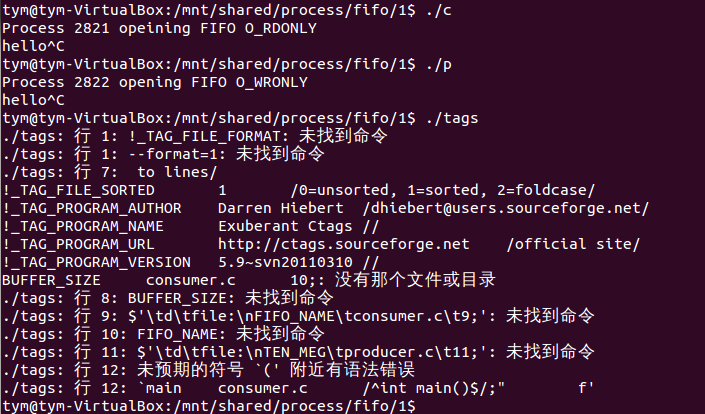第十二周预习报告
exec1
#include <stdio.h>
#include <unistd.h>
int main()
{
char *arglist[3];
arglist[0] = "ls";
arglist[1] = "-l";
arglist[2] = 0 ;//NULL
printf("* * * About to exec ls -l\n");
execvp( "ls" , arglist );
printf("* * * ls is done. bye");
return 0;
}
exec2与exec1的区别就在于,execvp函数调用的语句变成了
execvp( arglist[0] , arglist );编译运行结果与exec1.c完全相同,说明arglist数组的第一项为要运行的程序的名称。
exec3.c中给出了一系列的exec函数调用方法,其不同用法如下图所示:

4.pipe文件夹-consumer.c文件
#include <stdio.h>
#include <stdlib.h>
#include <string.h>
#include <fcntl.h>
#include <limits.h>
#include <sys/types.h>
#include <sys/stat.h>
#define FIFO_NAME "/tmp/myfifo"
#define BUFFER_SIZE PIPE_BUF
int main()
{
int pipe_fd;
int res;
int open_mode = O_RDONLY;
char buffer[BUFFER_SIZE + 1];
int bytes = 0;
memset(buffer, 0, sizeof(buffer));
printf("Process %d opeining FIFO O_RDONLY \n", getpid());
pipe_fd = open(FIFO_NAME, open_mode);
printf("Process %d result %d\n", getpid(), pipe_fd);
if (pipe_fd != -1) {
do {
res = read(pipe_fd, buffer, BUFFER_SIZE);
bytes += res;
} while (res > 0);
close(pipe_fd);
} else {
exit(EXIT_FAILURE);
}
printf("Process %d finished, %d bytes read\n", getpid(), bytes);
exit(EXIT_SUCCESS);
}
【1.PIPE_BUF的值是多少?】
4096字节
【2.memset函数用法?】
原型:memset(void *s,int ch,size_t n);将s中前n个字节用ch替换并返回s
【3.open函数用法?】
open(const char *pathname,int flags);第一个参数是欲打开的文件路径字符串,第二个参数是打开方式
【4.FIFONAME是什么?】
这里需要补充一下fifo的含义,它是一种文件类型,可以通过查看文件stat结构中的stmode成员的值来判断文件是否是FIFO文件。fifo是用来在进程中使用文件来传输数据的,也具有管道特性,可以在数据读出的时候清除数据。
fifo
生产者和消费者问题

- testpid
#include <stdio.h>
#include <unistd.h>
#include <sys/types.h>
int main()
{
printf("my pid: %d \n", getpid());
printf("my parent's pid: %d \n", getppid());
return 0;
}



